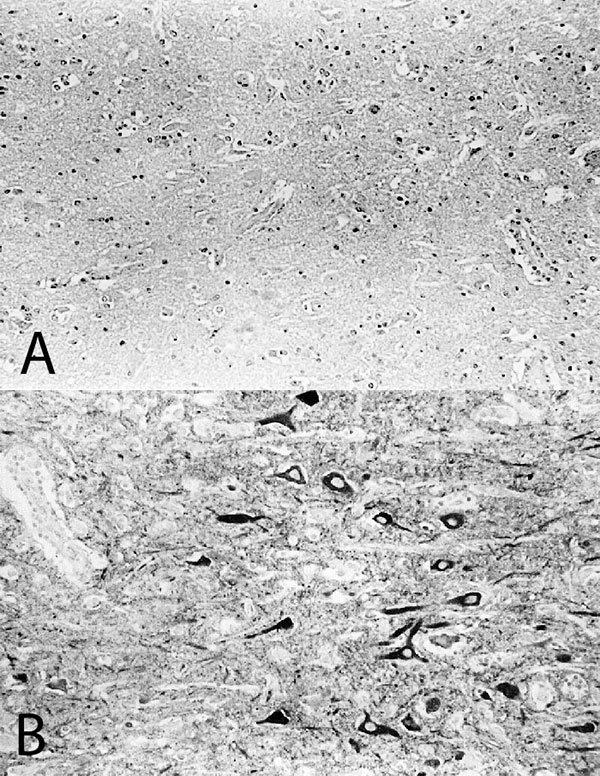Volume 3, Number 3—September 1997
Synopsis
Borna Disease Virus Infection in Animals and Humans
Figure 1

Figure 1. Immunohistologic analysis of consecutive brain sections from the cerebral cortex of horse #215 with A) the monoclonal antibody Bo18, specific for the p38/p39 BDV-protein and B) a rabbit monospecific serum, specific for the p24 BDV-protein. Immunoreactive neurons are only detected with the p24-specific antiserum. Papa-nicolaou-counterstain, x130.
Page created: December 21, 2010
Page updated: December 21, 2010
Page reviewed: December 21, 2010
The conclusions, findings, and opinions expressed by authors contributing to this journal do not necessarily reflect the official position of the U.S. Department of Health and Human Services, the Public Health Service, the Centers for Disease Control and Prevention, or the authors' affiliated institutions. Use of trade names is for identification only and does not imply endorsement by any of the groups named above.